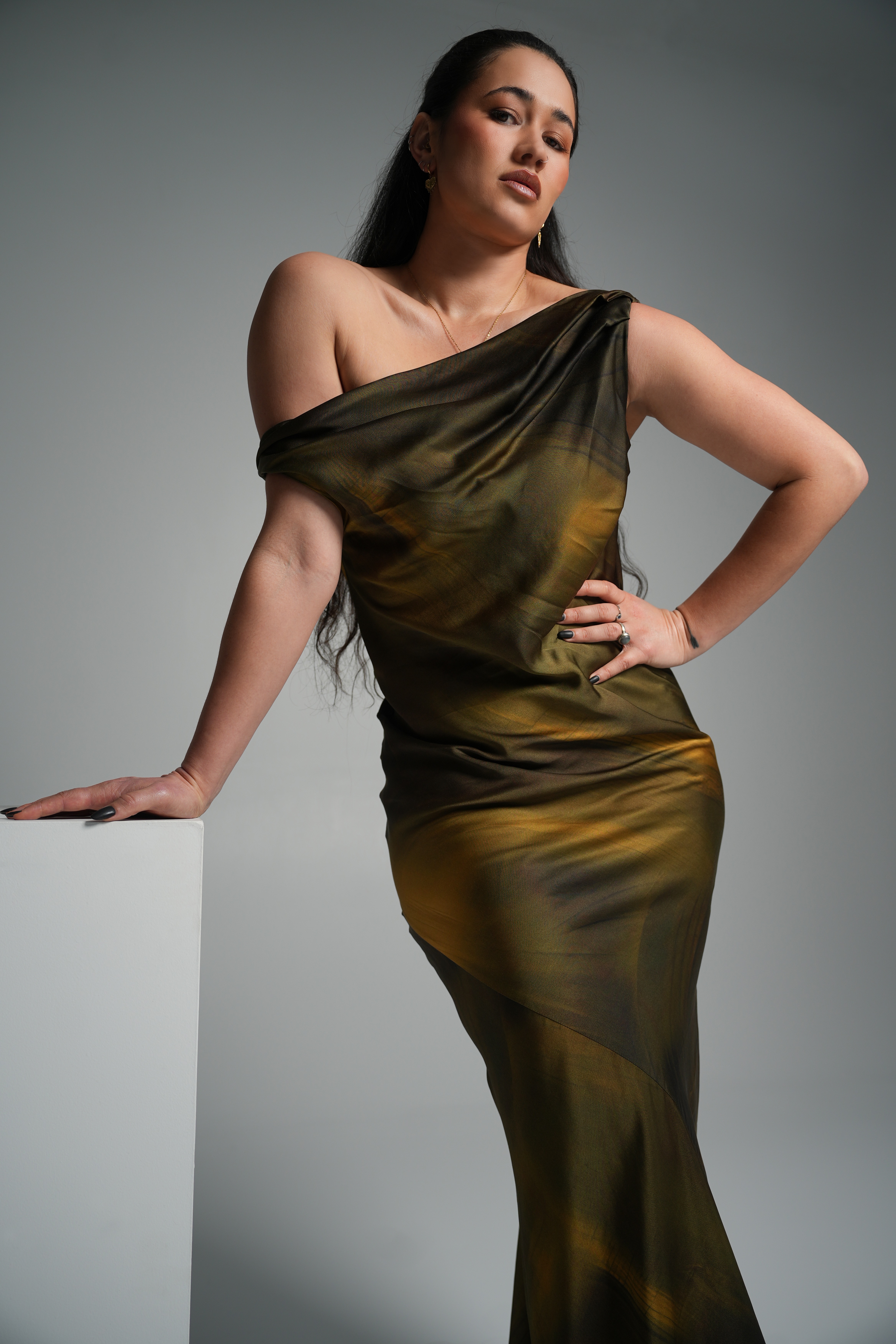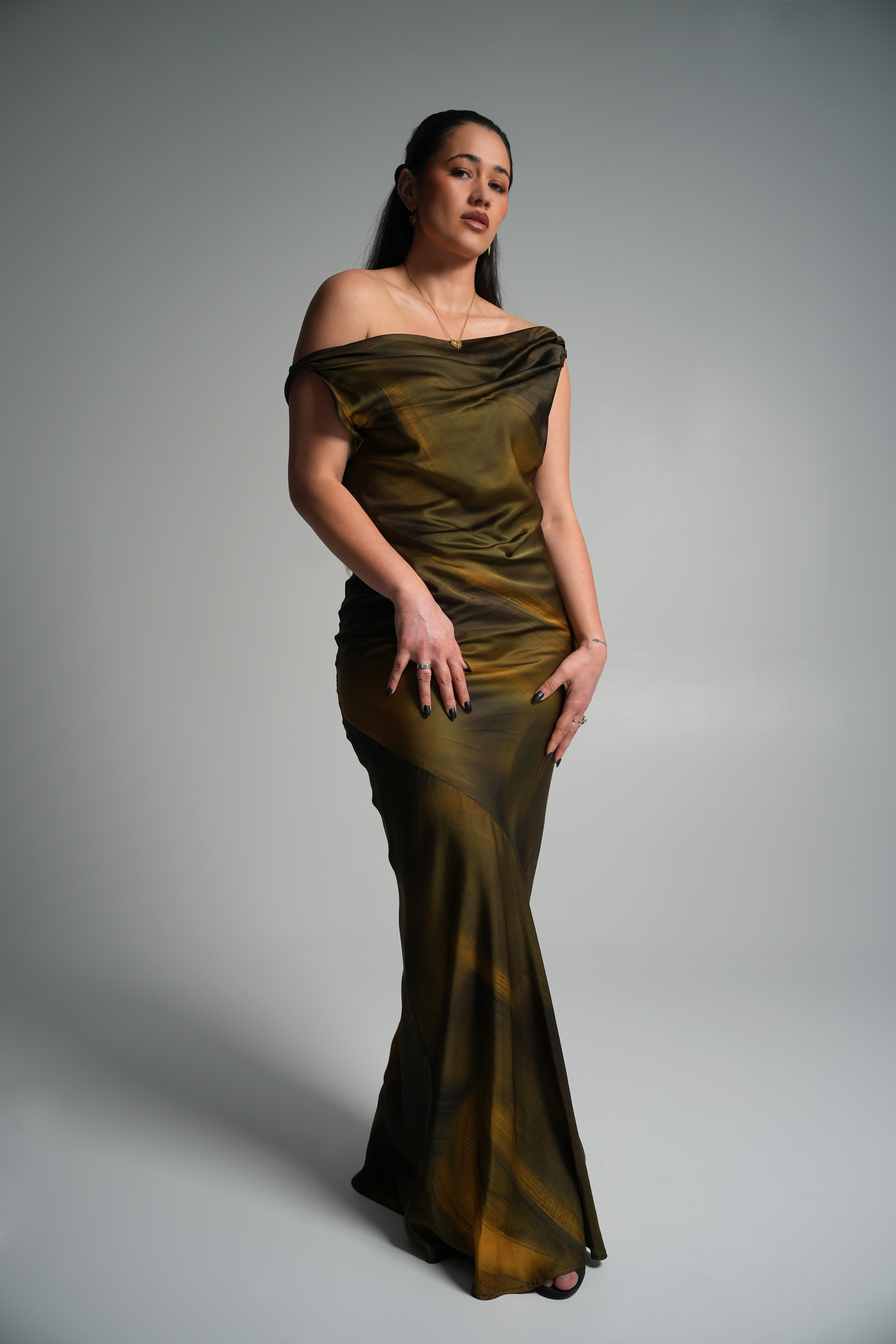Te Ao o Hinepehinga, who stars alongside Jason Mamoa in the Apple TV+ drama “Chief of War,” spoke to NYOTA about preparing for fight scenes, learning ʻŌlelo Hawaiʻi, and stepping into her character Kupuohi’s shoes.

As someone who has professionally danced and earned a B.A. in Performance Art, what draws you to acting, and how does your dancing background contribute to your acting methods?
Dancing gave me a lot of confidence. Despite my love of storytelling, I prefer to stay in the back and hide from the spotlight. Not exactly the kind of energy you need for this line of work…dancing helped me figure out how to step out of my comfort zone and embrace the attention. It’s a bit hard to hide when you’re dressed in a bedazzled bikini with a massive feather headdress. It was an unexpected detour, but I learned a lot about myself during that time. I realized hiding in the back was stopping me from fully experiencing what the arts industry had to offer and I’m grateful for every moment I had dancing in Australia. It’s a highlight of my life.
When preparing for the role of Kupuohi in Chief of War, what helped you most in portraying and honoring her on screen?
It’s hard to pick one. Kupuohi sung to me the moment I read the script. She was a raw and honest representation of what a woman is. Strength, softness, leadership and guidance. She reminded me of the women who had raised me and the woman I hope to become. The silent leaders of the world, holding space for any and all who needed it. The women who raised me are fierce. They blaze through this world unapologetically and stepping into Kupuohi’s shoes, emulating her mana and the mana of the women who raised me, strengthened my own voice and resilience. I am a better person having walked in her shoes for a moment.
Chief of War champions its authenticity in portraying and honoring Hawaiian culture and history, part of which is maintained in the show, being in the Hawaiian language, Ōlelo Hawai’i. What was it like learning this language and speaking it onscreen on a mainstream platform where Ōlelo Hawai’i isn’t widely represented?
As part of the production, we were each given a language coach to work with to make sure our ‘olele was as good as it could be. Kalei Kawa’a was mine and she is my main inspiration for Kupuohi, we spent hours every day leading up to the production and during filming working on the language, and in doing so, her person. Everything from the way she stood to her presence in the silence. Kalei helped me to define what it was to be a Hawaiian woman at the time, understanding the social dynamics of the period and the ways that women molded history and the men she cared for along the way. It was important to us that she held the mana of what it is to be a Polynesian woman and maintain the authenticity of the indigenous experience. People keep saying she’s this badass but in truth, I think she is exactly who our women are, regardless of where they come from. They’re unyielding, brave, loving. They’re warriors and the givers of life. I hope every woman who sees her finds a little of themselves in her story. I hope they feel seen.
You play a lead role as Kupuohi, a warrior woman who is married to Ka’iana, played by Jason Momoa – what was it like working with Momoa, who is also a producer on the project?
It was surprisingly easy. Working alongside Jason, I got to see the work that went on behind the cameras and costumes on set. He isn’t just the lead actor on this show; he’s the guy steering the ship of this whole production. He has spent the better part of his career building towards this project and working with him every day, I saw the care and effort he poured into this story. As an upcoming Polynesian storyteller, I couldn’t not be inspired by that. In many ways, we were living the story of unification through coming together to support our Kanaka cousins on this journey and the rest came naturally with that experience.

In the first two episodes of Chief of War, there are these incredible fight scenes where we see your character, Kupuohi, fiercely protect her family. What was the process like in training to embody a “mana wahine” – or warrior woman – in these fighting sequences?
All the credit belongs to our incredible stunt teams and Kanaka Maoli advisors. They worked tirelessly to make sure we were safe but also embodied the style of fighting that was unique to the people of Hawai’i. Lua or Kapu Kuʻialua is a sacred practice, one taught to very few but because of the generosity and kindness of the Hawaiian community, we were able to be guided through the process. That responsibility had me practicing drills and movements every chance I had between take and in my kitchen. Just like acting, the body tells so much of the story and as a woman who dedicated her life to war and the defense of her people, I knew I had to get it into my bones because it’s the very essence of her character.
What did the role of Kupuohi mean to you as a Maori woman, and what do you hope viewers take away from watching the show?
Beyond being Māori, it was about being an indigenous woman. To represent our greater Polynesian community and share that with the world is a gift. Something many before us have been working towards and it’s for them that this job was of the utmost importance to me, to honor their work and sacrifice. I hope that inspires the world, that it brings about more open and inclusive conversations about the world. I hope it inspires more of our indigenous people to share their stories and perhaps inspire those who have yet to explore their indigenous heritage to go out and find it. We are all indigenous people of the world and our history is filled with beauty that deserves to be felt and shared.
There is a very clear intersection between the show representing Hawaii’s history, where colonization is present, and your background in social activism for native land restoration and protection. Did you see this intersection when accepting your role, and what do you think Chief of War reveals about the importance of indigenous Hawaiian culture?
I think I’ve always seen storytelling as an act of social rebellion. Acting is the recreation of the human experience; it’s breaking down world narratives and stories and making them human. Individual and accessible to the everyday person. That’s why this project excites me, we’ve opened the door a little further to let the world in and encourage them to break down their own barriers in life. Chief of War, like Shōgun and Reservation Dogs, has changed the rules on how we share the stories of this world and that is exciting! It’s about taking ownership of our stories and as the audience, it’s about being open to see the world from a different lens. Art has been the medium by which we break the mold for generations, I see this show as TV and Film getting a little closer to what it always was intended to be. Art.
When filming Chief of War, one of the main locations to film in was New Zealand – as someone born Kiwi of Maori descent, what was your comfort New Zealand-Polynesian food when filming?
Ooooh… the list that pops into my head. I love me some Maori food, Hāngi, boil up, I love it all! But while I was filming, I ate a lot of kina (sea urchin) on vogels toast with real butter. Very important part, using real butter. Being in Aotearoa means it’s not hard to find sea urchins; I could fill a whole sack full of them at the beach in my hometown. It might be a rare delicacy to some, but if you have a snorkel and mask on the East Coast, it’s lunch.



